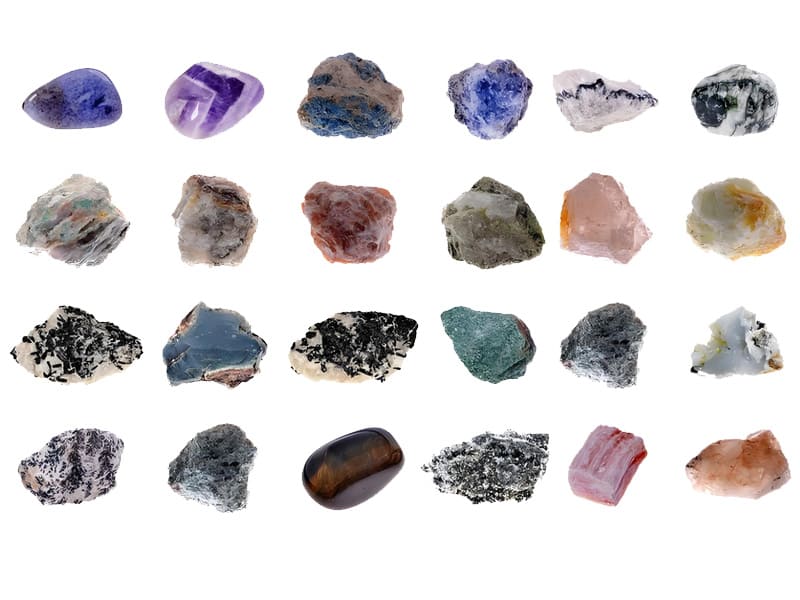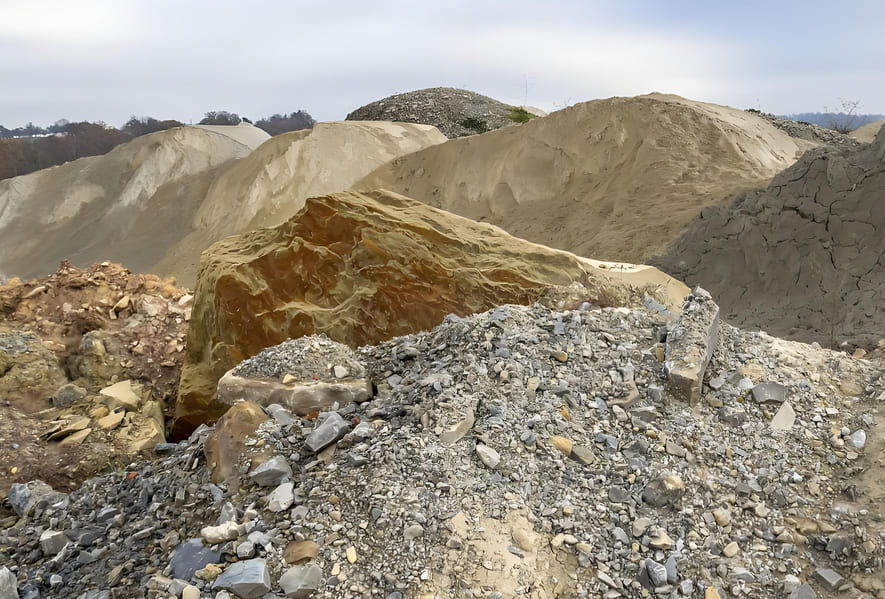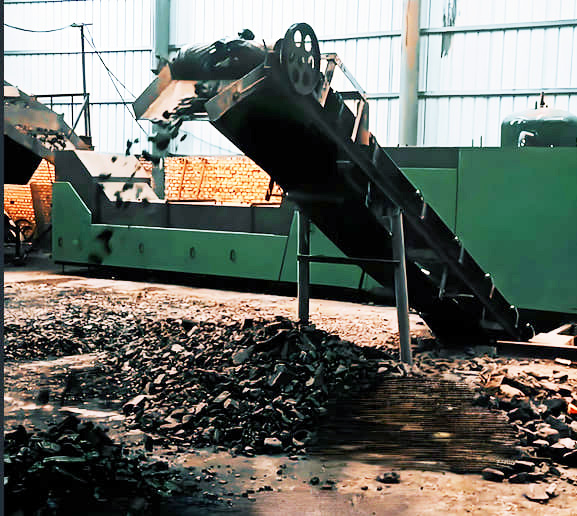In mining, every scoop of material costs money to dig, haul, and process. Yet only certain rocks contain valuable minerals. How do professionals tell the difference between valuable ore and worthless waste rock?
Ore contains economically valuable minerals that can be profitably extracted. Waste rock has too little mineral content to justify processing. The key difference lies in metal concentration: ore reaches certain grade thresholds that make extraction worthwhile. What counts as ore today might be waste rock tomorrow if metal prices drop or technology improves.
Understanding this distinction seems simple, but real-world mining operations face complex decisions. Let me show you how geologists and mining engineers make these crucial calls on sites I’ve supplied equipment to.
How Do We Classify Different Types of Ore?
Not all ore looks alike. My team once processed what appeared to be ordinary rock until lab tests revealed surprising mineral content. Proper classification impacts every step from extraction to refinement.
Ore falls into two main categories based on mineral composition. Metallic ores contain metals like iron, copper, or gold in compounds we can extract. Non-metallic ores contain useful minerals like sulfur, diamonds, or limestone that don’t yield metals when processed.

Not all ore looks alike. My team once processed what appeared to be ordinary rock until lab tests revealed surprising mineral content. Proper classification impacts every step from extraction to refinement.
Ore falls into two main categories based on mineral composition. Metallic ores contain metals like iron, copper, or gold in compounds we can extract. Non-metallic ores contain useful minerals like sulfur, diamonds, or limestone that don’t yield metals when processed.
Metallic Ores
Metallic ores are ores containing metal elements or their compounds, mainly used to extract metals. Depending on the metals contained, they can be subdivided into ferrous, non-ferrous, and precious metal ores.
These fall into three sub-groups based on metal content:
| Ore Type | Metals Contained | Common Examples |
| Ferrous | Iron | Hematite, Magnetite |
| Non-ferrous | Copper, Zinc | Chalcopyrite, Sphalerite |
| Precious | Gold, Silver | Gold nuggets, Argentite |
Ferrous Metal Ores
Ferrous metal ores mainly include iron, manganese, and chromium ores, which occupy a pivotal position in the industry.
Iron ore is the core raw material for steel production. Common iron ores include magnetite (Fe₃O₄), hematite (Fe₂O₃), limonite ( Fe₂O₃・nH₂O), etc. Magnetite is magnetic, which is convenient for magnetic separation and can efficiently extract iron concentrate. It is widely used in the steel industry to manufacture various structural steels, tool steels, and construction steels. It is an indispensable basic material for many industries such as construction, machinery manufacturing, and the automotive industry.
Manganese ore also plays a key role in industrial production. Manganese ore can be divided into manganese oxide ore (MnO₂), manganese carbonate ore (MnCO₃), etc. Manganese can improve the strength, hardness, wear resistance, and corrosion resistance of steel in steel production. It is an important alloying element for the production of high-performance alloy steel and special steel. In the battery industry, manganese is also used to manufacture high-performance batteries. With the rapid development of the new energy vehicle industry, the demand for manganese is also increasing.
Chromium ore is mainly used to produce ferrochrome, chromium salts, chrome bricks, chrome-magnesium bricks, and other materials. Chromium alloys have excellent properties such as high hardness, high melting point, and corrosion resistance. They are used in the automotive industry to manufacture key parts such as engines and gearboxes; in the aerospace industry, they are used to manufacture important parts such as aircraft engines and rocket engines; in the petrochemical industry, they are used to manufacture petrochemical equipment such as reactors and heat exchangers.
Non-ferrous Metal Ores
Nonferrous metal ores are metal ores other than ferrous metals, covering many types of metals, such as copper, aluminum, lead, zinc, nickel, tin, tungsten, molybdenum, etc. They possess desirable physical properties, including electrical conductivity, thermal conductivity, and ductility, and are widely utilized in modern industry.
Precious Metal Ores
Precious metal ores contain rare, high-value metals with excellent corrosion resistance and luster. They are used in jewelry, electronics, and as financial investments.
Examples of precious metal ores:
- Gold ore (e.g., native gold, calaverite)
- Silver ore (e.g., argentite, native silver)
- Platinum group metal ores (e.g., sperrylite for platinum, laurite for ruthenium)
Non-Metallic Ores
Non-metallic ores contain no or almost no metal elements, and they also play an irreplaceable role in the fields of industry, construction, decoration, etc. Common non-metallic ores include quartz, feldspar, kaolin, bentonite, wollastonite, calcite, etc.
These serve diverse industries:
- Industrial minerals: Used as-is (e.g., limestone for cement)
- Chemical minerals: Processed into compounds (e.g., phosphate for fertilizer)
- Gemstones: Cut and polished (e.g., diamonds, emeralds). The processing methods differ radically. Our flotation machines work well for metallic ores, while crushers handle most non-metallics.
Why Does Waste Rock Matter in Mining Operations?
During a mine visit last year, I watched trucks haul away mountains of waste rock. “Why keep this?” I asked. The answer changed how I view mining efficiency.
Waste rock accounts for 60-90% of material moved in mining. While it lacks economic minerals now, smart operations reuse it for construction, backfilling pits, or leaching residual metals. Proper waste rock management reduces environmental impact and cuts disposal costs. Some mines even stockpile it for potential future processing.
Key Roles of Waste Rock
- Structural Support
- Backfill the excavated areas
- Builds access roads
- Creates stable slopes
- Environmental Protection
- Covers toxic tailings
- Prevents acid rock drainage
- Supports revegetation
- Future Resource
| Potential Use | Example |
| Reprocessing | New extraction methods |
| Construction | Aggregate for concrete |
| Landscaping | Golf course development |

Can Waste Rock Become Ore Later?
A copper mine in Chile shocked the industry by reopening old waste dumps. What turned worthless rock into a $2 billion asset?
Changing economics and technology constantly redefine ore. When copper prices tripled, minerals previously too costly to extract became viable. Heap leaching technology then recovered copper from rock once considered waste. This dynamic boundary affects equipment choices—we now supply modular plants that can process varying material grades.
Factors That Transform Waste to Ore
| Advancement | Impact |
| Better sensors | Finds overlooked minerals |
| Efficient crushers | Handles harder rock |
| Bioleaching | Extracts metals from low-grade material |
- Rising metal prices
- Lower energy costs
- New tax incentives
- Stricter mine cleanup laws incentivize reprocessing
- Carbon credits for using existing waste
In the mining industry, the determination of ore and waste rock is not constant, but rather dynamic, changing in response to various factors. Below we will describe in detail of technology, economy, and environment.
Technological Progress
Technological progress is one of the key factors driving the change in the definition of ore and waste rock. With the continuous development of science and technology, mining, mineral processing, and smelting technologies are also continuously innovating. In the past, due to limited technical level, some mineral aggregates were regarded as waste rock because of their low content of useful components, difficulty in mining, or high extraction cost. But now, new mineral processing technologies and equipment are constantly emerging, making it possible to mine and utilize low-grade ores that were difficult to use in the past. In iron ore beneficiation, traditional beneficiation methods such as magnetic separation, flotation, and gravity separation are constantly improving. At the same time, some new beneficiation processes, such as biological beneficiation and combined beneficiation, have also been widely used.
Biological beneficiation uses the metabolism of microorganisms to dissolve the useful components in the ore and separate them from the waste rock. This method has unique advantages for processing low-grade and difficult-to-select ores.
Combined beneficiation is an organic combination of multiple beneficiation methods. According to the properties and characteristics of the ore, the appropriate process combination is selected to improve the beneficiation efficiency and recovery rate.
In some copper mining, copper ores with a grade of less than 1% were usually treated as waste rock due to the high cost of mining and refining. However, now, with the development of efficient flotation reagents and the upgrading of flotation equipment, copper ores with a grade of 0.5% to 1% can also be effectively mined and refined, and these original “waste rocks” have now become ores with economic value.

Changing economic conditions
Changes in economic conditions also have an important impact on the judgment of ore and waste rock. Market demand and price fluctuations are important aspects of economic factors. When the market demand for a certain metal or mineral product is strong and the price rises sharply, some mineral aggregates that were originally in marginal benefits may be re-evaluated as ores due to the increase in economic value. Against the background of the rapid development of the new energy vehicle industry, the demand for metals such as lithium and cobalt has increased sharply. The price of lithium ore has risen sharply in the past few years, making some lithium ore resources that were originally regarded as waste rock due to low grade and high mining costs now have the value of mining and utilization. Some lithium mining companies have begun to re-explore and develop low-grade lithium mines that were abandoned in the past and extract lithium metal from these low-grade lithium mines to meet market demand by optimizing mining and mineral processing processes and reducing costs. Conversely, when market demand is sluggish and prices fall, some original ores may be downgraded to waste rock because mining and processing are no longer economical. During a downturn in the steel industry, iron ore prices fall, and some lower-grade, more difficult-to-mine iron ore mines may choose to suspend production. Under the economic conditions at the time, the ore in these mines is actually equivalent to waste rock.
Environmen
Social development needs and policy orientations are also changing the definition of ore and waste rock. With the enhancement of environmental awareness and the popularization of the concept of sustainable development, the requirements for comprehensive resource utilization and environmental protection are becoming higher and higher. Some mine wastes that were discarded as waste rock in the past are now regarded as secondary resources with potential value.
Conclusion
The line between ore and waste rock depends on economics, technology, and mineral content. Proper identification requires constant testing and reassessment throughout a mine’s life. As equipment suppliers, we design flexible systems that adapt when today’s waste becomes tomorrow’s ore. Smart classification isn’t just geology—it’s the foundation of profitable, sustainable mining.
